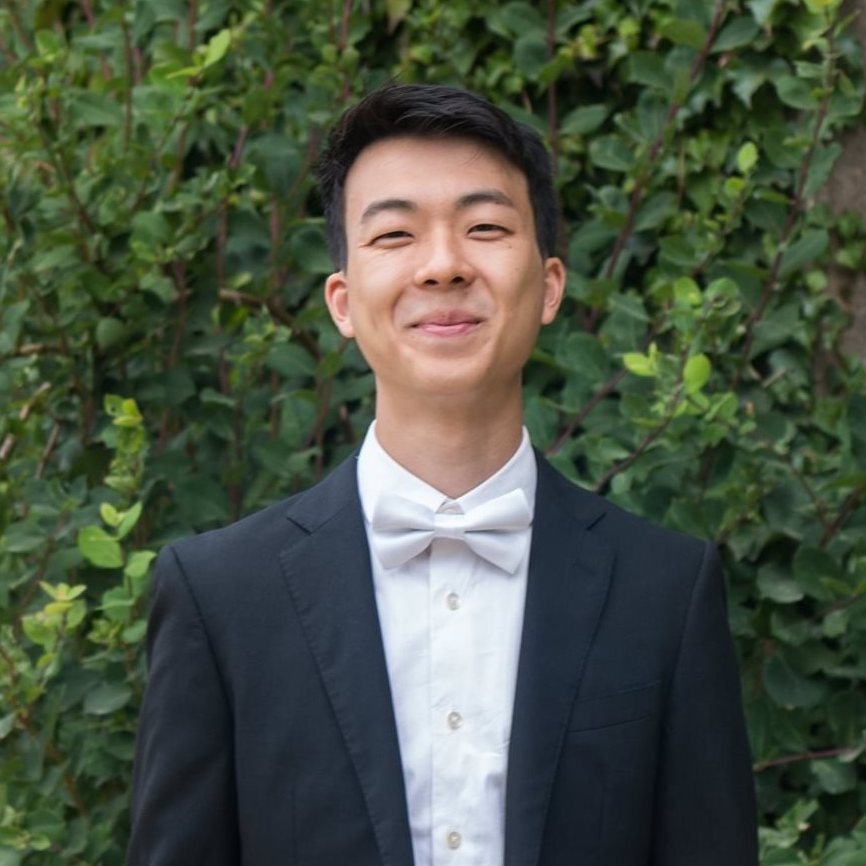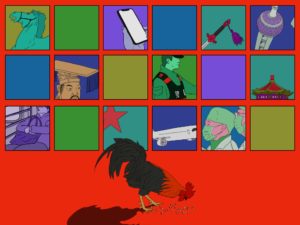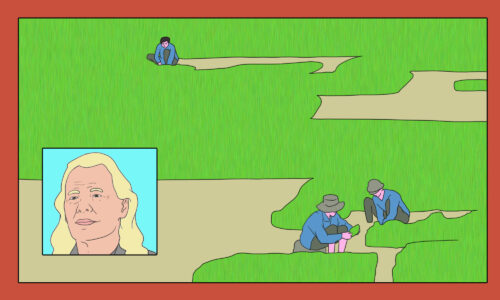
China’s rise has been accompanied by a growing dependence on the rest of the world for food. Now, in the age of hot wars, cold wars, and climate change, Beijing wants to ensure that “the rice bowls of the Chinese people are filled with Chinese grain.”
The philosopher Amartya Sen once observed a surprising trait about democracies: for all their messiness, they never seemed to let their people go hungry. In China, the worst of the emperors neglected the people’s basic need for food. Máo Zédōng 毛泽东, during the Great Famine of 1958 to 1962, was following an ancient tradition. But as market reforms took hold in the 1980s, a thrumming middle class — along with a global market that offset supply shortages — nearly ended the food crisis. But recently, as pandemics and geopolitics rattle global supply chains, the sourcing of food has become precarious yet again.
How should China feed its people in an age of land wars, trade wars, and climate change? The question was the focal point of this year’s annual legislative meeting, known as the “Two Sessions.” More than any country in the world, China confronts an innate food predicament: it must feed a fifth of the world’s population with only a tenth of the world’s arable land. (The United States, by contrast, has the comparative luxury of feeding just 4% of the world’s population with 16.5% of the world’s arable land.) To escape this natural shortage, China has had to rely heavily on foreign countries for its food. For years, the concomitant risks were manageable. But not anymore. Last week, China’s leader, Xí Jìnpíng 习近平, told a group of political delegates that food security had become a matter of “national strategic import.” He ordered his cadres to ensure that “the rice bowls of the Chinese people are filled with Chinese grain.”
When the price of wheat goes up 50%, that’s noodles
China’s latest reckoning over food was hastened by recent events. Though the Russia-Ukraine war was conspicuously absent as a topic of discussion at the Two Sessions, it was a blaring subtext. Roughly a third of China’s corn comes from Ukraine, along with a sizable chunk of barley and sunflower oil. Since the war began, the global price index of wheat, maize, barley, and rice soared by an average of roughly 25%. The Chinese Communist Party is no stranger to food price fluctuations. But whereas past trade skirmishes from Australian wine to Taiwanese pineapples were mere inconveniences, a full-throated war in the breadbasket of the world is almost existential. “When you can’t get your Taiwanese mangoes, that’s annoying,” said Richard Brubaker, Founder of Collective Responsibility, a Shanghai-based food and sustainability non-profit, “when the price of wheat goes up 50%, that’s noodles. That’s steam buns. That’s bread.”
As part of his “new economic development model,” one that seeks to balance growth with sustainability and security aims, Xi Jinping has turned his back on many of the old tenets of China’s reform years. Tech startups are now discouraged from raising overseas capital. English-language classes are being replaced by courses on Party ideology and gym classes. Domestic chipmakers are showered with lavish subsidies to combat foreign competitors. In nearly every sector, from the internet and data to microchips and energy, Beijing’s guiding priorities have pivoted from openness and freedom to security and stability. The prominence of food at this year’s Two Sessions marks an inflection point in the Party-led initiative to add food to the broader security equation.
Food security has officially been a part of China’s policies for decades. In 1996, the State Council, China’s highest administrative body, issued a white paper setting a 95% self-sufficiency target for grains such as rice, wheat, and corn. But decades of rising incomes, along with ambitious economic growth targets, forced China’s leaders to compromise on that vision. In 1975, the Chinese population consumed 7 million tons of meat, a figure that, by 2018, reached 86.5 million tons. Although China is known as the world’s factory and the biggest exporter in the world, it relies on imports in some areas, such as livestock feed. By 2014, China was the largest consumer of soybeans worldwide, importing six times more than it can domestically produce. Much of that feed came from one of the largest soybean exporters in the world: the United States.
There was a time, perhaps a decade ago, when relying on another country to source food was about as risky as driving a car on the highway: everyone was doing it, and it was generally safe so long as everyone observed the rules. Then came Donald Trump. After Washington’s tariffs on $550 billion worth of Chinese exports in 2018, China’s risk calculus — when it comes to being at the mercy of foreign markets — changed irrevocably. Beijing retaliated by making fewer purchases of American soybeans, but the damage was double-edged: while American farmers suffered most, seasonal droughts in Brazil and other alternative soybean markets raised the price of soy and pork at home. “China is just so averse to political risk in these categories,” said Brubaker. “They don’t want another country dictating their political views and holding their food hostage.”
The pandemic — with its supply chain disruptions, power cuts, and soaring vegetable prices — led to a further Chinese walkback from foreign markets under a domestic-driven consumption plan known as “dual circulation.” Then the U.S.-led sanctions against Russia simply cemented the new status quo: that foreign dependencies for China were no longer a basis for better relations, but a ticking time bomb. What’s more, even in a world of perfectly cooperative nation-states, a deeper structural threat loomed: A report from the Intergovernmental Panel on Climate Change just four days prior to the Two Sessions estimated that 8% to 30% of the world’s agricultural land could be lost by 2100. All of this has contributed to what Xi Jinping calls a “period of turbulent change” in the world, and the elevation of something as basic as food, by extension, to a top national priority. Last year, the 14th Five-Year Plan set multiple production goals for grain crops, along with a plan to raise soybean production by 40%. Last March, an article in the authoritative Party theory journal Qiushi linked China’s “new development model” to an economy that takes food security as “an important foundation for national security.”
A plan as strict as the one-child policy?
In their emphasis on austerity, selective technology adoption, and zero-tolerance, the Communist Party’s plans to address the food issue reflect much of the spirit of the Xi Jinping era. They include a revamped country-wide initiative to curb food waste, efforts to boost grain storage, and plans to diversify food supplies away from the West to countries along China’s Belt and Road Initiative. They also include calls to invest heavily in biotechnologies as well as a severe crackdown on land conservation. In technology, the best-performing seeds have, for years, been the provenance of U.S. agriculture giants like Dupont Pioneer and Monsanto, leading Táng Rénjiàn 唐仁健, China’s new minister of agriculture, to compare seed technologies to the “computer chips” of agriculture. To close the food gap, China has lavished subsidies to develop its own agri-chips. But just like their silicon cousins, the development and maturation of agri-chip companies could take years.
A more immediate solution, one that has become the bedrock of China’s new food security campaign, is the conservation, and industrialization, of extant farmland. At the Two Sessions in 2019, Xí Jìnpíng 习近平 told an Inner Mongolia delegation that urbanization must have “an insurmountable red line,” lest it swallow the remainder of China’s 1.28 million hectares of arable land. The balance between farmland conservation — a matter of food and national security — and urbanization — a matter of economic growth — epitomizes Beijing’s latest emphasis on sustainability and “high-quality” growth.
The redlines, like similar ones in the real estate sector, are the latest guardrails on Chinese capitalism: By preventing farmland from being used for non-agricultural purposes — the commercial playground fantasies of deep-pocketed developers — the rules actively suppress enormous value from the land, value that could fund local government coffers. Mark Wang, a human geographer at the University of Melbourne who specializes in Chinese urbanization, told me that the policies were some of “the most powerful [he] had ever seen.” In terms of their ambition and scale, he said, “it’s equivalent to the one-child policy.” According to Wang, the economic incentives to violate the redlines are so strong that fraud is rampant, and the central government has resorted to satellite imagery to enforce the rules. Last August, an article in the People’s Daily, the mouthpiece of the Communist Party, said: “When it comes to protecting farmland, violators will not be allowed to slip through at any cost, nor given any hope of success.”
Can China own the future of farming?
Farmland conservation is just the first step, however. To close the food gap, China must make the land more productive. Today, thanks to historical agricultural policies, over 98% of China’s arable land comprises small-scale farms — an average of 2.31 square miles compared to an average of 695 square miles in the United States. That leaves a wellspring of untapped potential in the land, which can be extracted from new technologies such as precision-farming, a technique that uses drones and other robotics to improve efficiency. “[Farming automation] is a huge area for China going forward because it fits in really well with the overall push to Industry 4.0,” said Brubacher. “They’re trying to own the bots, chips, and technology. And if they can do it, they’re going to own the future of farming.” Agriculture-based drones startups have surged in popularity among investors of late, and, in August, tech giant Pinduoduo dedicated 10 billion yuan ($1.57 billion) to “address critical needs in the agriculture sector.”
In the fall of 2018, at the height of the U.S.-China trade wars, Xi Jinping took a tour of China’s northeast. As he visited wheatfields, oil refineries, and steel mills in China’s “rustbelt,” the scene of timeworn factories and lifeless towns recalled similar industrial heartlands in the West, like Detroit or Northern England. Since ancient times, China has been the victim of natural forces outside its control, including floods, droughts, and plagues. But now Xi has vowed that a new era is dawning. From food to energy to manufacturing, we must “count on ourselves,” he told a group of farmers and factory workers. “At the end of the day, China counts on no one but itself.”






